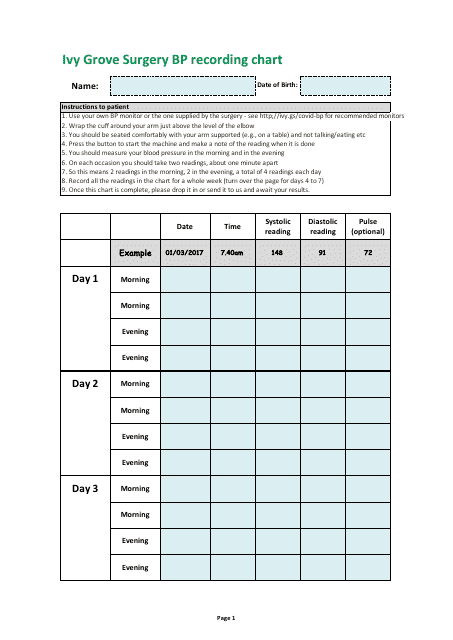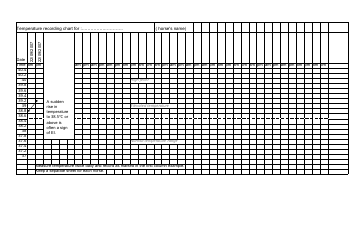Bp Recording Chart
A BP recording chart is used to track and monitor a person's blood pressure over a period of time. "BP" stands for Blood Pressure, which is a key indicator of your heart health. The chart often involves noting down readings at different times of the day to observe any fluctuations and trends. These charts can be helpful for doctors to diagnose conditions like hypertension or low blood pressure, and to monitor how well a patient's ongoing treatment or lifestyle changes are working.
A BP (Blood Pressure) Recording Chart is typically filled out by healthcare professionals such as nurses, doctors, or medical assistants. The chart is used to track a patient's blood pressure over a period of time. This information can be critical for evaluating a patient's overall health and managing conditions such as hypertension. In some cases, individuals may also be instructed by their healthcare provider to monitor and record their own blood pressure at home.
FAQ
Q: What is a BP recording chart?
A: A BP recording chart, also known as Blood Pressure recording chart, is a document usually used by healthcare providers to keep track of a patient's blood pressure readings over time. It can consist of both systolic and diastolic pressure readings and may include other elements like pulse rate or comments about the reading. It is often used as an important tool to monitor the effects of medication or lifestyle changes on blood pressure levels in patients.
Q: How is a BP recording chart used?
A: BP recording chart is used to monitor and keep track of an individual's blood pressure readings over a period of time. These readings are often taken at different times of the day to account for normal fluctuations. The chart helps healthcare providers to assess the effectiveness of treatments, detect hypertension, or prevent potential cardiovascular complications.
Q: Why is a BP recording chart important?
A: A BP recording chart is important because it provides healthcare providers with a visual history of a patient's blood pressure levels. It can reveal patterns, such as how the blood pressure responds to medication, exercise, or stress, and allows doctors to make more informed decisions about treatments.
Q: How often should blood pressure be recorded on a BP recording chart?
A: The frequency of blood pressure recordings can vary based on the individual's health condition. However, if you are monitoring your blood pressure at home, it is often recommended to take readings at the same two times each day. It's important to follow your healthcare provider’s recommendation regarding how frequent the blood pressure measurements should be.
Q: Can anyone use a BP recording chart?
A: Yes, anyone can use a BP recording chart. It’s particularly helpful for patients with high blood pressure, prehypertension, or other conditions that require regular blood pressure monitoring. But even if you're just keeping track of your health, a BP chart can be a valuable tool.






